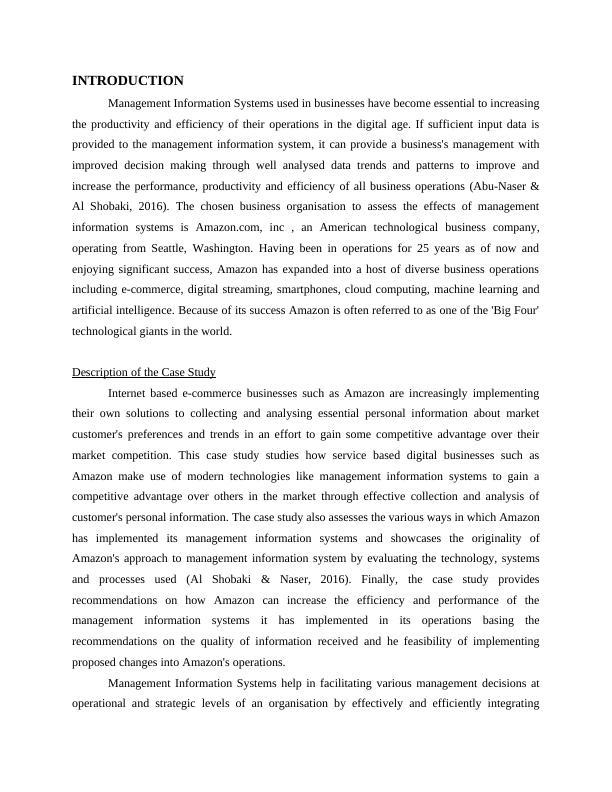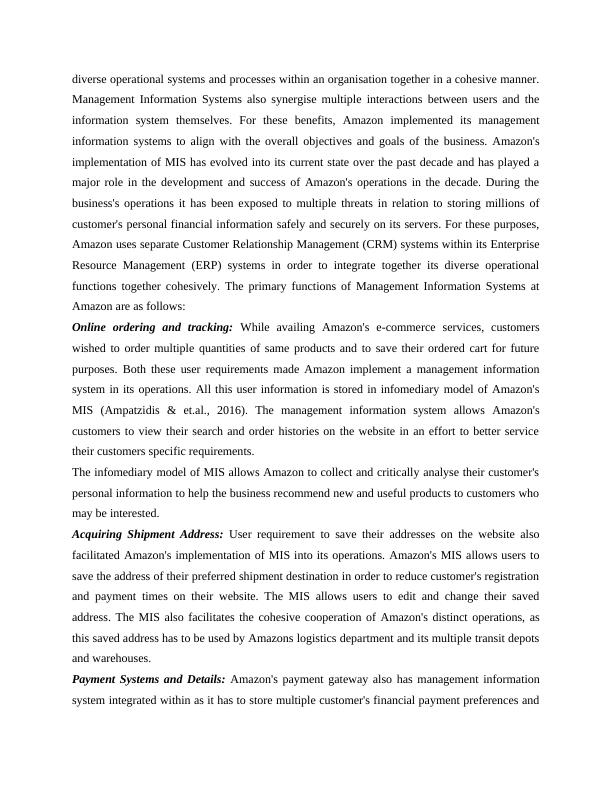Business Analysis for Information Technology
11 Pages2835 Words94 Views
Added on 2023-01-12
About This Document
This report evaluates how Amazon has implemented MIS into its operations and the multiple software requirements implementing such a system entailed. It also provides recommendations on how Amazon can increase the efficiency and performance of the management information systems it has implemented in its operations.
Business Analysis for Information Technology
Added on 2023-01-12
ShareRelated Documents
End of preview
Want to access all the pages? Upload your documents or become a member.
3. Marketing Fundamentals. Table of Contents. Customer
|4
|356
|39
Information Systems and Digital Strategies for Amazon
|14
|4378
|229
Information Technology and Retail Co-existence
|9
|3780
|12
Importance of Mini-drone Delivery Technology for Amazon Company
|8
|1692
|25
Business Process Modelling and Management Using Information Systems
|12
|3389
|53
Key Trends and Advantages of Digital Technology for Managing Virtual Business: A Case Study of Amazon
|13
|3836
|123




